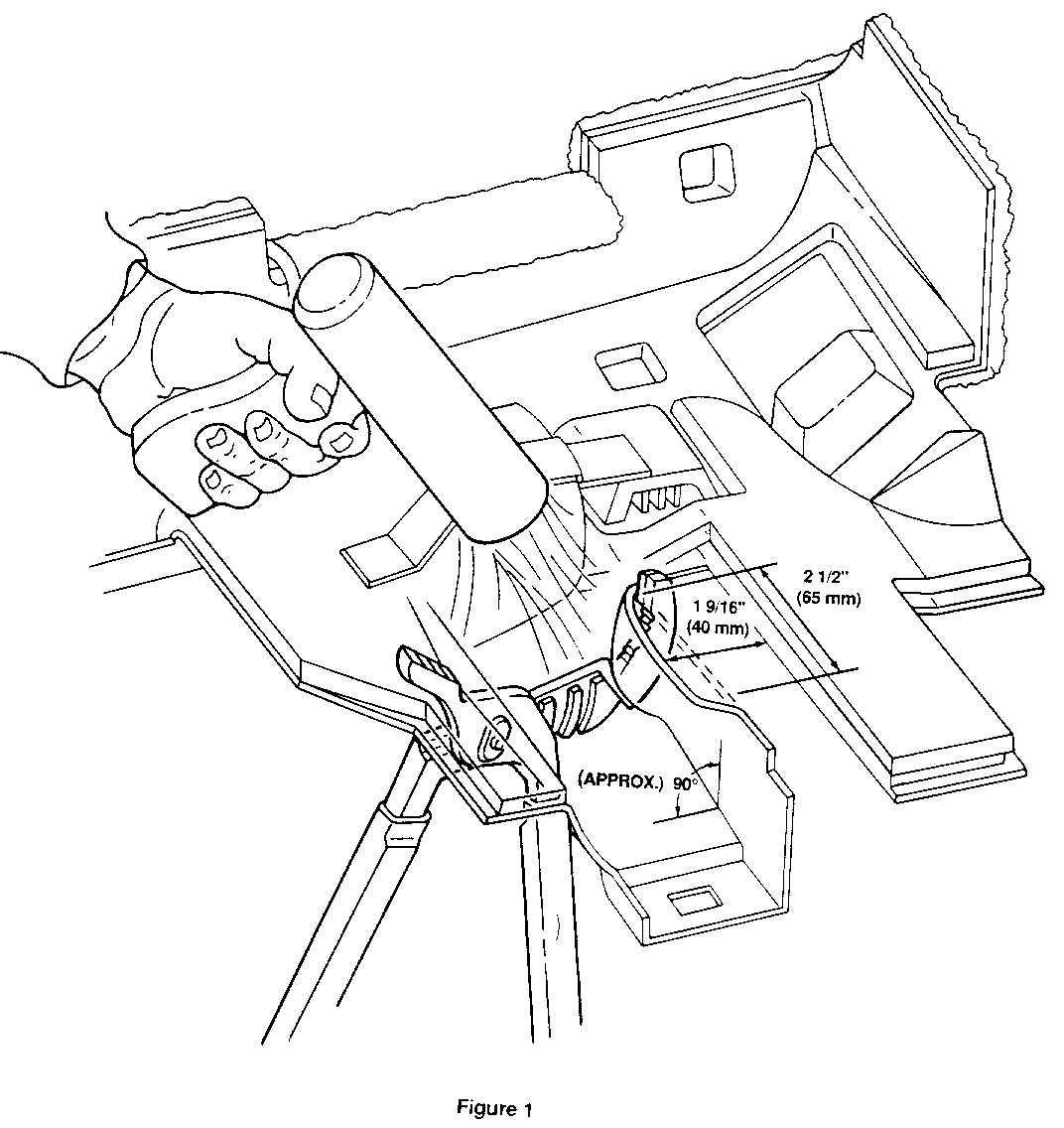LACK OF BRAKE PEDAL RETURN BRAKE LIGHT STAYS ON (PROC.)

SUBJECT: BRAKE PEDAL NOT FULLY RETURNING, STOP LIGHTS STAY ON, AND/OR ROUGHNESS-VIBRATION-NOISE FROM REAR OF VEHICLE
VEHICLES AFFECTED: 1992 "Y" CAR
Condition:
---------- Some customers of 1992 Y-cars may comment of brake lights staying on and/or lack of pedal return, which may cause light brake drag. Brake drag may, in turn, cause roughness-vibration-noise and/or a noticeable slowing of vehicle or automatic transmission downshift when attempting to maintain a constant speed. Also, driver may comment that the cruise control will not set or ASR may not function.
Cause:
------ Some 1992 Y-car base Corvettes built from SOP to VIN breakpoint 104324 and ZR1's built from SOP to VIN breakpoint 800193 may exhibit inadequate clearance between the brake service pedal arm and the I/P lower trim panel.
Correction:
----------- Determine if interference exists between brake pedal arm and I/P lower trim panel (a minimum clearance of 2mm (.080 in.) is required). To verify clearance, an item approximately 2mm thick, such as a 2mm shim, should pass between the trim panel and pedal arm on both sides. If there is clearance, diagnose concern per Service Manual, Section 5-3. If the minimum clearance does not exist, perform the following steps:
Procedure:
---------- 1. Remove LH lower trim panel (per Service Manual, Section 8C-33).
2. Lift away the foam sound deadener from area shown in Figure #1, and tape out of the way.
3. Using a heat gun, warm the trim panel area shown in Figure #1 (USE CARE TO WARM COMPLETE AREA EVENLY).
4. Using Channel Locks (R) size 16 or larger, place near the upper LH corner of the I/P lower trim panel as shown in Figure 1. Quickly reform the brake pedal opening to configuration and dimensions indicated in illustration. If necessary Channel Locks may be moved downward during initial reforming and/or Steps 3 and 4 may be repeated to obtain minimum clearance of 2mm between the brake service pedal arm and the I/P trim panel.
Note: To lessen Channel Lock inprint, place smooth shim stock or aluminum face cover between the Channel Lock face and the warmed surface on the trim panel.
5. Reinstall lower trim panel. Remeasure the clearance between trim panel and the brake pedal arm, using method stated in correction above.
For vehicles being repaired under warranty use:
Labour Time: 0.8 Hour

General Motors bulletins are intended for use by professional technicians, not a "do-it-yourselfer". They are written to inform those technicians of conditions that may occur on some vehicles, or to provide information that could assist in the proper service of a vehicle. Properly trained technicians have the equipment, tools, safety instructions and know-how to do a job properly and safely. If a condition is described, do not assume that the bulletin applies to your vehicle, or that your vehicle will have that condition. See a General Motors dealer servicing your brand of General Motors vehicle for information on whether your vehicle may benefit from the information.
